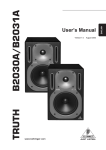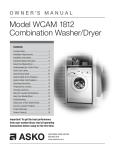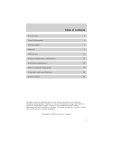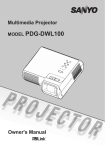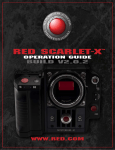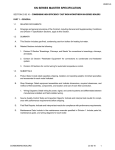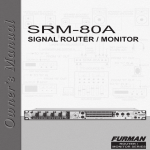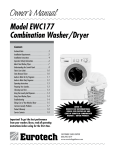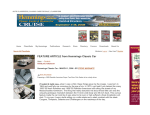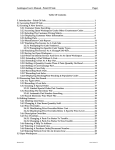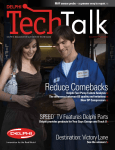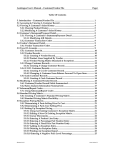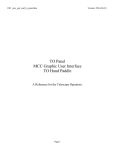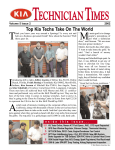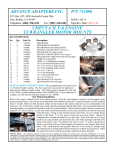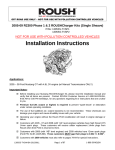Download Drivetrain - Shoalhaven Motorsport
Transcript
Building A 1935-40 Ford Chapter 3 Drivetrain An old name in Ford performance has a new line of crate motors. Jack Roush now puts his name on dyno’d and warranted performance engines. W hen it comes to selecting running gear for a street rod, it seems the norm is a small-block Chevy and an automatic transmission. To prove that point just look under the hood of the ’3540 Fords at any rod run, and chances are you’ll see something made by GM in that Ford engine compartment. Of course there are a variety of reasons for this, not the least of which are the facts that the small-block Chevy fits like it was meant to be there, they’re affordable, and let’s face it, they’re good engines. But as the old saying goes, there’s more than one way to skin a cat—and the same holds true for powering a street rod. Of course the crew at Hot Rods by Dean make everything look easy. While “being different” is often the reason given for putting a Ford in a Ford, the truth is there are a host of others just as compelling. Small-block Fords are excellent engines, they’re readily available, and with the popularity of 5.0 Mustangs, performance parts abound. But there are still a couple of issues that must be addressed when installing a small-block Ford in a ’35-40. The first may be the oil pan. Depending on the engine’s origin, it may or may not be equipped with a front-sump pan; however, in most engine-swap scenarios, a rear sump will be required. At one time the only cure for that was an early Bronco pan, but now there are factory Ford dualsump pans (these have a small front sump under the oil pump with a drain plug and a rear sump with a drain plug) as well as aftermarket replacements (our pan came from Roush). And while it’s true that due to the location of the oil pump, the Ford is deeper immediately Drivetrain behind the vibration damper than a small-block Chevy, with most suspension combinations, clearance is adequate. As we’ve said, the other problem with slipping a Ford into a Ford is the engine’s length. Some builders simply modify the firewall to make extra room. In our case, the J.B. Donaldson body has a recessed firewall that will accommodate just about any engine. However, if you’re working with a stock ’35-40 firewall, component selection will be critical, particularly when it comes to the front of the engine. Over the years there have been a variety of front covers, water pumps, vibration dampers, and seemingly endless combinations of The shop door to Jack Roush Performance Engineering rolled up in 1976, and since then the company has grown to employ over 2,000 people in 50 locations worldwide. They build lots and lots of engines. 27 A Guide To... Everything is done in-house at Roush. Here a block is being align-honed to make sure the main bores are true and provide an accurate centerline for decking the block. The key to making a small-block Ford perform is getting it to breathe, something the team at Roush has figured out how to do. As a result, the raw castings are finished to their specs. While there are a variety of performance levels, each Roush engine gets the same attention to detail during assembly. 28 pulleys and brackets that have been used. And while that does complicate selecting components, for the most part the configurations of factory parts were useless anyway. Just about all the factory pieces made the engines longer than practical, in a vintage engine compartment, and on top of that they were ugly. But Hot Rods by Dean found a simple solution to all this—it’s called the Front Runner Engine Drive System from Vintage Air. Since everything from the front of the block forward was an issue with a Ford small-block, that’s where Vintage Air started. They engineered a unique forged front cover that incorporates mounts for the alternator, A/C compressor, belt tensioner, and power-steering pump. The beauty of the design is that no other brackets are required. Front Runner drive kits include the front cover, spring-loaded belt tensioner, stainless hardware kit, crankshaft pulley, water-pump pulley (power-steering pulley is optional), and serpentine drivebelt. Also available are two all-inclusive kits that contain an A/C compressor with hard lines and an alternator. These kits are available with polished and chromed or anodized components, and power-steering pumps and pulleys are optional on either. Confident that we could make a Ford fit in our Ford, we went looking for an engine. We wanted something powerful and reliable from someone we had complete confidence in; when it comes to Fords that’s just another way of saying Jack Roush. For those who have even a passing interest in motorsports, the name Jack Roush is a familiar one. He has designed, built, modified, or somehow been connected with cars showing up in winners’ circles of every racing venue in the country. Over the last 25 years the crew at his company, Roush Performance, has put together thousands of engines that have raced and won in drag, road, and oval track racing, and set numerous records at Bonneville. With that background and the general reputation Roush had established, several builders of reproduction Cobras called looking for a “better” crate motor. Roush responded and the end result of those inquiries is that you can now have a Ford engine built to their exacting tolerances and a two-year/24,000-mile limited warranty. Currently several series of engines are being offered in both carbureted and fuel-injected form. All engines are hot-tested, horsepower and torque are verified on a dynamometer, and serial numbers are issued. Unlike some engine suppliers that offer a base engine with a few options, it’s hard to get your hands around everything Roush is capable of providing. They can perform virtually any machining function in-house; in fact they make their own pulleys, grind cams, CNC-port heads, and can turn raw castings of blocks, heads and CHAPTER 3 Building A 1935-40 Ford Before they are shipped every engine is dyno’d and checked for leaks. A dyno sheet and personalized engine ID tag with a serial number, as well as horsepower and torque numbers, are included. Like we said, Roush builds lots of engines; if they don’t have one in inventory that’s exactly what you want, they’ll build it for you. manifolds into finished pieces. There is little they can’t do, so if you want it, they can probably supply it—but in most cases you’ll find something off the rack that will fit. For our ’36 we chose what’s called the 342R. The stroked 302 is based on a two-bolt main block and comes with a custom cast crank, I-beam rods, and a main cap girdle for bottom-end stability. Roush aluminum heads and a hydraulic roller cam all combine to make 430 hp with 415 lb-ft of torque. Dyno’d, checked for leaks, and covered by a warranty, a Roush crate motor may be the best bargain around. Topping our Roush engine is a Digital Fuel Injection system from ACCEL. The Generation VII system comes with a high-flow intake manifold, billet throttle body, high-flow fuel rails, and adjustable pressure regulator. The brain of the injection system is ACCEL’s DFI Management system; it controls all aspects of fuel delivery and ignition timing, as well as having the capacity to activate torque-converter lockup, engine-cooling fans, and air-conditioning compressor bypass switches. Choosing A Transmission Arguably the most popular transmission in street rodding today is the automatic overdrive. The obvious advantage to them is the wide gear spread that provides a low First gear for acceleration from a standing start with an overdrive top gear for improved economy on the road. While GM’s overdrive autos are perhaps better known, Ford has produced a variety of them as well: The Automatic Overdrive (AOD) transmission was introduced in 1980 as Ford’s first four-speed automatic overdrive transmission (aka AOT or FIOD in some literature). Internals are loosely based on the FMX. The AOD was finally replaced by the AOD-E/4R70W in 1994 for all remaining applications. Drivetrain To top off our engine we opted for ACCEL DFI. For performance, throttle response, and mileage, digital fuel injection is impossible to beat. The ACCEL fuel management system includes an ECM, wiring harness, sensors, Calmap cable, and software and a 1-Bar map sensor. 29 A Guide To... A clean and easy way to shorten the front of a Ford engine is Vintage Air’s Front Runner. Shown here is the complete kit, they’re available with polished or satin components. When it came time to select a transmission for our ’36 we relied on the experts at TCI. According to them, the AOD-E/4R70W is the latest and best Ford performance transmission and represents the foreseeable future of performance rear-wheel-drive, automatic-transmission technology. The beauty of the AOD-E/4R70W is that it retains all of the AOD’s good features while improving the weak points (some of which can be improved in an AOD by using AOD-E parts). The AOD-E incorporates an enlarged 2-inch–wide overdrive band, thereby eliminating an obvious weak link, as well as providing some of the previously mentioned upgrade parts for the AOD. Another feature that is greatly improved from the AOD is the “lockup” or torque converter bypass system. Instead of the weaker concentric input shaft system of the AOD, the AOD-E/4R70W uses an actual clutch in the converter to provide lockup under EEC control, rather than the fixed “60-percent lockup” in Third and “full lockup” in Fourth gear system of the AOD. The stronger input shaft and greater flexibility of this system are further enhanced by the fact that the converter clutch may actually be partially applied or “slipped” under electrical PWM (pulse-width modulation) control from the EEC PCM. At the heart of the Front Runner is an all-new timing cover. It incorporates the accessory mounts such as the alternator, power steering pump, and air-conditioning compressor; no additional brackets are required. When installing the Front Runner, everything from the front of the block forward is replaced. FIXING THE WEAKNESSES The AOD-E transmission first appeared behind the 4.6L modular V-8 engines in 1992. Essentially a beefed-up electronically controlled version of the AOD, the AOD-E also includes a new and stronger wideratio model (the AOD-EW or 4R70W) which was introduced in the ’93 Lincoln Mark VIII. The AOD-E (in both standard and wide ratio versions) completely replaced the old AOD in 1994 with a new case that mates to the 5.0L and 3.8L engines. Fullsize trucks first received the huge E4OD (Electronic four-speed Overdrive) transmission in 1989. Internally, it is essentially a C6 with overdrive added to the front. 30 As good as the 4R70W transmissions are, TCI makes a host of improvements. First, they start with the latest cases that include all the factory improvements. Then they replace all the bushings and seal rings with the best quality pieces available. In addition, Kevlar-lined low-reverse and overdrive bands are installed, along with Alto clutch discs. To enhance performance and increase the amount of horsepower that can be transmitted, TCI installs their high-performance overdrive-servo assembly (11 percent larger than biggest OEM servo) the directdrive input shaft is replaced with TCI heat-treated Vasco 300 high performance input shaft, and a special TCI pressure-regulator spring increases torque capacity. After all the modifications are made and the special parts installed, each transmission assembly is statically tested for individual hydraulic circuit integrity before the valve body is put in place. Next each transmission receives a 100-percent tested, remanufactured valve body, then it’s off to the dyno to verify proper functions, pressures, and cooler flow. When a TCI transmission shows up at your door, it’s ready to go. TRANSMISSION CONTROLS The new breed of automatic transmissions are controlled by electronic control units (ECU). TCI’s CHAPTER 3 Building A 1935-40 Ford Although the A/C compressor mounts on the left side of the engine; formed tubing delivers the inlet and outlets to the passenger side to make connections easier. newest offering is a transmission control wnit (TCU) designed specifically to allow the user maximum control and tuning when using their T-Com WP software. The user has the choice of line pressures, shift timing and firmness of shift for both upshift and downshift points. A feature exclusive to T-Com WP is the ability to have part-throttle shifts as a function of road speed, while the wide-open throttle shifts can be a function of engine rpm. Plus, tuning is quick and simple. Initial calibration only requires answering a few quick questions in the calibration program. Tire size and gear ratio are plugged in to assure proper speed data; the installer indicates which transmission is being used, then the unit is ready to go. Additional calibration is only required if the user wishes to customize the shift characteristics to suit their wishes. n These drawings show how compact a Ford can be made with Vintage Air’s Front Runner. The completed Front Runner installation is good looking and compact. An off-the-shelf tensioner is used, and an enginedriven fan is an option. Although Ford engines are narrow, exhaust clearance in ’35-40 chassis is tight. We used Sanderson tight-tuck headers to dodge all the obstacles. Drivetrain 31 A Guide To... For the flexibility provided by the wide-ratio gearset, we selected a Ford 4R70W transmission from TCI. All TCI transmissions are dyno-tested before delivery, and only the latest cases that incorporate all the factory improvements are used. TCI StreetFighter transmissions are equipped with Trans-Scat kits to increase shift firmness and increase torque capacity. A stiffer pressure-regulator spring results in increased line pressure to the direct clutches and overdrive band. TCI offers a variety of torque converters. This is their Saturday Night Special. It has a stall speed that is approximately 500 rpm over stock for increased off-the-line performance, while the lockup feature is retained for efficient cruising. Compare the AOD pan (top) to that from an E4OD (bottom). AOD and AOD-E pans are the same shape (at 14.6-inches long and 13-inches wide) and both have 14 bolt holes, however the patterns are slightly different. The E4OD pan has 20 bolt holes and is 20.2 inches long and 13.6 inches wide. 32 It’s the little things that count. The stock Ford snap ring on the overdrive drum is prone to dislodging during high-rpm operation; TCI replaces it with a special spiral lock that eliminates that problem. CHAPTER 3 Building A 1935-40 Ford To improve performance, TCI uses a Kevlarlined band in their overdrive transmissions. Ford used three overdrive band servos, identified A, B, or C (A is the biggest), depending on application. TCI’s Super Servo is 11 percent larger than Ford’s A-servo to increase the band’s holding capacity. This flexplate is an over-the-counter Ford item. Note the balance weight and the four oval holes. You’ll see the reason for the oval holes shortly. For those unfamiliar with Fords, this is a starter plate that goes between the block and transmission. It serves two purposes: first it locates the starter in the correct location relative to the flywheel/ flexplate, and it locates the torque converter properly in the transmission’s pump. For the ultimate in shock absorption and vibration isolation, we chose a TCI polyurethane transmission mount. The TCI castaluminum transmission pan increases fluid capacity, will stiffen the trans case, and it comes with a magnetic drain plug to trap debris and simplify oil changes. Drivetrain The flexplate will only fit properly one way—with the balance weight toward the block. The center register also has a flared lip that must face out. 33 A Guide To... Note the flat spot on the hub of the torque converter; it fits into the transmission’s front pump. If the converter is not seated correctly and the transmission and engine are pulled togetherby the bolts, the pump is generally destroyed. The Roush small-block fits like a glove, of course the setback in the J.B. Donaldson body helps. With Ford installations the engine may sit a little higher than with a Chevrolet. In addition, the engine may be offset to the passenger side if necessary, as long as the centerline of the engine and transmission is parallel with the centerline of the chassis. ALPHABET SOUP How To Tell One Ford Engine From Another ike its GM counterpart, small-block Fords have been produced in a variety of displacements. However, Ford also built distinctly different series of small-block engines: the 221, 255 (an under-bored 302 used in the early ’80s), 260, 289, and 302 (all referred to as the Fairlane series); and the second series includes the 351W, 351C, and 351/400M (called the 335 series). To further complicate things when mixing and matching Ford parts, within each series there are significant differences. As an example, 221, 260, and early 289 engines had a five-bolt bellhousing pattern. From mid-’65-on, all 289s, as well as the 302 and 351 engines that would follow, had a six-bolt pattern. Something else that confuses the issue is the alphabet soup Ford used as designations, and the fact that three different engines had the same displacement: 351W (Windsor, which looks like a Fairlane-series but uses an entirely different block), 351C (Cleveland), and the 351/400 M (Modified). All these engines are considered small-blocks, even though the C and M looked much larger due to their canted valve heads, because the bore spacing and head bolt patterns are the same as the Fairlane series. (The legendary Boss 302 used a Fairlaneseries block with Cleveland-style heads.) Of all the engines Ford has produced, the most popular and frequently modified are the 302 (the 5.0L) small-blocks. As you might suspect—just to keep things interesting—there’s more than one version of the 5.0, the earlier flat-tappet style and the ’85-and-later hydraulic roller-tappet design. The difference is the roller block has taller lifter bosses and the cam-bearing bores are bigger to accommodate the shaft’s larger-diameter bearing journals and base circle. L It may take some twisting and turning, but when the converter seats, it will do so with a noticeable “thunk” from inside the converter. Still, the best way to check is with a tape measure. It should be 1 inch (or as much as .050-inch less) from the front of the transmission case to the stud pad on the converter. With the transmission bolted to the engine, the converter should be able to move front to rear ever so slightly (push and pull on the studs to check). Remember the oval holes? They’re for the converter’s drain plug to stick through. 34 CHAPTER 3 Building A 1935-40 Ford With the engine set in place, the Flaming River shafts and U-joints were installed; with the Sanderson headers there was room to spare. Note how the shaft runs under the oil filter. This is typical in a ’35-40 installation. To keep our cool, we called on one of the oldest names in the street rod radiator business, Walker. They can supply a radiator for any ’35-40 with any engine, with and without transmission coolers and A/C condensers. Cooling Components supplied the fan. It comes complete with a well–thoughtout shroud and mounting brackets. In addition it moves a ton of air. On the right side, clearance isn’t an issue. There’s plenty of room to run the exhaust pipe between the frame/starter/ motor mount. In this case stock-style Ford motor mounts were used. Although they are rather large, they cleared the Sanderson headers and the steering shaft. Drivetrain Spending time at the local parts house with a cooperative counterperson should result in finding molded radiator hoses that fit perfectly. 35 A Guide To... Thanks to the folks at TCI, here are some things you should know about transmission installations. Transmission Dos and Don’ts Dos Run your transmission with the vehicle on jack stands, so that any maladjustments are corrected before they can cause damage. 1. Back flush cooler to prevent contamination of new transmission and converter. Replace the TCI-installed filter after initial use. (Race: 20 passes; Street: 500 miles) Bushings and clutches in an automatic have a break-in that generates fiber and metallic particles. 2. If you intend to install a used converter, have it professionally flushed and fully inspected before using it. Proper inspection includes measuring pilot, hub, endplay, and overall length, and comparing those to the manufacturers’ specifications. 3. Verify that the converter is property installed in the transmission before bolting the unit into the vehicle. Refer to the enclosed instructions. 4. Thoroughly inspect your flexplate and driveshaft before installing the transmission. Look for bad teeth, cracks, loose or missing balance weights, or worn yoke or universal joints. These problems will cause vibration and other damage. 5. Always install and adjust any required TV or kick-down cables exactly according to the instructions. Inadequate pressure will quickly destroy your transmission. Refer to the instructions supplied with your transmission and/or vehicle service manual. 6. Verify shifter adjustment before starting engine. Vehicle should start in park and neutral only. Also, severe transmission damage will occur if the unit is operated between gears. Refer to shifter instructions or vehicle service for procedures. 7. Check that the transmission-cooler lines are not kinked or touching the exhaust system. 8. If your transmission is equipped with a vacuum modulator, it is very important to verify the amount of vacuum at the modulator with a gauge. Automatic transmissions typically need a minimum of 12 in. Hg. at idle. A throttle-position increase should produce a quick decrease in the vacuum reading at the modulator. Not enough vacuum will cause late, harsh shifts. Slow response to throttle position changes (due to a kinked or plugged line) will not property boost line pressure and will burn up your transmission Don’ts 1. Don’t accept your transmission from the delivery driver until you personally inspect it for cracks, dents, or breakage. 2. Never install a converter of unknown specifications or origin. It could be the wrong application or, if damaged, could ruin your new transmission. 3. Don’t attempt to use a kinked metal or all-rubber hose to connect the vacuum modulator if applicable. Proper installation is a metal line carefully bent, with just a few inches of rubber hose on either end for connection. 4. Never install a TV cable on a Holley carburetor without the proper brackets. Your transmission will burn up as a result of inadequate operating pressure. TCI carries a bracket designed specifically for Holley carbs. 5. Never use a solid transmission mount in any circumstance. This will cause the case to crack because it is not designed to be a stressed member of the chassis. 6. Never install pipe plugs in the cooler fittings. A cooler loop, in the very least, should be installed so that transmission lubrication is not compromised. 7. Don’t use Teflon tape when installing cooler fittings into the case or the case will crack. 8. Don’t overfill your transmission because this will foam and aerate the fluid, causing heat and low-pressure problems. Be sure the dipstick and tube are correct for your application. 9. Add at least 4 quarts of transmission fluid to your transmission before starting the engine to prevent damage. Continue filling with the engine running to the proper level. 9. Don’t use the vehicle if a problem is suspected with your new transmission. Many times problems can be rectified while the transmission is still in the vehicle. However if the transmission suffers permanent damage it will need to be removed. 10. Re-torque the oil-pan bolts after installation to 13 lb-ft to prevent leakage. 10. Do not hesitate to call TCI at (662) 224-8972 or e-mail us if you have any questions about your new TCI transmission. Even with the recessed firewall, things get a little tight around the back of the engine with the fuel rails and pressure regulator. The crew at Hot Rods by Dean revamped the fuel lines to increase clearance. 36 With the recessed firewall, the brake pedal sticks out into the engine compartment. This is another of the hundred items that must have room to operate without running into something else. CHAPTER 3 Building A 1935-40 Ford TIPS ONTRANSMISSION INSTALLATION are for flexplates and the long are for flywheels, but don’t count on it. You may want to cut to the chase and pick up a set of ARP bolts; they’re top quality and less money. Starter plates: Another unique feature of Fords is something called a starter plate. Sandwiched between the engine and transmission, its primary function is to properly locate the starter. As the starter bolts to the transmission case, it is possible to assemble the engine and transmission without the starter plate. This causes two problems. First, it is possible for the torque converter to go deep enough in the transmission to create a problem with the pump—it may bind or cause excessive wear. The other problem is that the mounting holes in the starter are large enough to let the starter move around as it is the raised ring on the starter motor and the hole in the plate that locates it. Starter plates don’t come with crate engines or with any of the aftermarket transmissions, so the best bet is to go to your local Ford dealer. The correct starter plate for a 5.0 and an AOD is F4TZ7007-A. Don’t forget the inspection cover, F4TZ-7986-AA. Flexplates: Ford offers a variety of small-block flexplates: which one is used depends on a number of factors. First is the balance of the engine. Small-block Fords are externally balanced, which means the flexplates/flywheels have weights on them. Engines built from 1981-on use a flexplate with a 50-in/oz balance; earlier engines used a 28.2 in/oz balance. In addition, diameters vary. For small-bellhousing C4 transmissions, the small-diameter 157-tooth flexplate is required, while the large-bellhousing C4 and AOD require the larger, 164-tooth flexplate. Flexplate bolts: The proper bolts for a small-block Ford flexplate are 7/16-20x7/8-inch. They can be found under part number M-4216-A-300 in the Ford Racing Performance Parts catalog. However, if you go into your local Ford dealership’s parts department and ask for flexplate bolts, you’ll more than likely get the wrong ones. It seems that Ford’s files have the part numbers for flexplate bolts and the longer flywheel bolts reversed. A sharp counterman will look at the microfiche and realize the short bolts Ford Transmission Dimensions Simple and sanitary, the Hot Rods by Dean guys installed a Lokar throttle cable, bracket, and return spring. Lokar cables are cut to the necessary length, and the ends are installed. A 3 3/16 B C D 21 23 5/16 55 /16 E 19 3/8 Ford Transmission Gear Ratios FORD Trying to find a factory trans dipstick that fits in a street rod is just about futile—plus they don’t look as good as this Lokar piece. Drivetrain C4 C6 AOD AODE-W/ 4R70W Lo 2.46 2.75 2.46 2.72 2.40 2.84 2 1.46 1.57 1.46 1.54 1.47 1.55 3 1.00 1.00 1.00 1.00 1.00 1.00 0.67 0.40 4 37 A Guide To... Driveshafts T he whole drivetrain is only as strong as its weakest component, so where strength is critical, you’ll need a stout driveshaft and U-joints to carry the load. Inland Empire Driveline Service recommends that performance applications are always better off with a new driveshaft, rather than a modified wrecking-yard example. New shafts are made of stronger, straighter, and rounder material, and you can have your choice of steel tubing, aluminum tubing, or even a composite driveshaft. Tell them what your application is and they’ll recommend the right stuff. The aluminum driveshafts have become very popular with both racers and street rodders. To order a new driveshaft, you have to make a specific, accurate length measurement, as well as tell the shop what kind of rear axle and transmission you’re using. With the car fully assembled, or at least with the rear axle at ride height, measure from the tip of your transmission’s tailshaft to the centerline of the U-joint cup on the pinion. Then measure how far the shaft sticks out of the transmission tailshaft housing. There are a few different kinds of yokes, so if you have a flange at either the rearend, transmission, or both, measure from the flat surface of the flange and tell the shop which end the flange is on and its bolt pattern. If your transmission has a bolt-on transmission yoke (not a slip-yoke), you can measure from the centerlines of the U-joint saddles at the trans and the rearend. Just make sure the shop knows exactly how your measurement was taken. If you’re in search of something trick-looking, Currie offers aluminum housings. Along with looking good, these can cut down on unsprung weight. They’re also available polished. The 9-inch Ford rear axle is the standard under street rods. Here Ray Currie holds an all-aluminum version. It’s hard to believe, but 9-inch housings are rare enough that Currie has tooled up to build new versions; also available is the smooth-back style that street rodders favor. 38 When building 9-inch axles there are a variety of choices in just about every area, including axletube thickness. CHAPTER 3 Building A 1935-40 Ford RearEnd Recommendations From Currie Enterprises T he basic 9-inch Ford rearend is adequate for strength in almost any street rod, and there are many ring-and-pinion choices available for whatever gearing you need, but there are sometimes other factors to consider: Axles: There are 28-spline and 31-spline axles for Ford rearends (both stock and aftermarket). For high-power applications, the 31-spline axles are superior. If you need axles for a rearend you already have, you need to know the wheel bolt pattern, wheel stud size, axle length, spline count, bearing size, and the diameter of the register hub on the face of the axle (where the drum centers). Bearings: There are several variations in Ford axle bearing sizes: the small-bearing, large bearing, and the late-model or “Torino” bearing. On heavy-duty applications, such as heavier vehicles or ones that will be doing towing, the larger-bearing rearends are recommended. If you’re ordering parts for an existing application, take the measurements of your housing end per the drawing before calling Currie. If you’re planning a rear disc brake conversion, check with the brake manufacturer first, since most kits fit the Torino-size bearing. Width: The rearend’s width is measured from one wheel-mounting surface to the other, sometimes called “drum-to-drum.” To determine the width if you’re ordering a new rearend, set the chassis at ride height with the body and fenders (if used) in place. Position the real (not shop rollers) rear tires and wheels exactly how they should sit in relation to the body and measure inside between the mounting flanges of the two wheels. Another Currie creation is the 9-pluscentersection. Stronger than the standard Ford issue piece, it’s a great choice for a street rod with some horsepower. Gear ratio: To find out what your “cruising” rpm will be on the open highway, the formula is: mph x gear ratio x 336 divided by TD (rear tire diameter). If you are running an overdrive trans (as many do today), multiply the result by the top-gear overdrive ratio. If your overdrive is called a “30 percent,” that means your final trans ratio is 0.70. Thus, if you have 3.70 rearend gears, 27-inch–tall rear tires, 30-percent OD and want to find out the projected engine speed at 70 mph (where permitted, of course), it would go like this: (70 x 3.70 x 0.70 x 336) ÷ 27 = 2,256 rpm. Gearing is always a compromise. At cruising speed, the closer to your engine’s torque peak you run, the better the punch will be. Lower rpms will give you better economy, but go too low and while in overdrive on the highway you won’t have much response. A target of 2,500-2,900 rpm will be a good compromise for most cars. Differential action: For 90 percent of the street rod world, a stock, open-type (non-locking) differential is just fine. A step up in traction would be the clutch-type limited-slip differential like our TSD (torque-sensing); perfect for those who have more serious engines and want to see two black strips when they stand on it, but without the drawbacks of the racing-style diff. Ours does not have loaded springs in the clutch-pack, so the differential is quiet and long-lived. For street/ strip applications a Ford “traction-lock” differential has a spring-loaded clutch pack for heavier cars in the more “abusive” action, but also has the characteristic tire chirp and occasional chatter (plus, the clutches don’t last forever). Beyond these types of differentials, there are several mechanical types that are either too noisy or even dangerous for average street rod use. This is the moment of truth; the first firing and the small-block Roush came to life with a serious bark. With fuel injection the throttle response is remarkable, and drivability should be outstanding. The Currie 9-inch at home; note the Panhard bar, anti-rollbar, and ShockWaves. Drivetrain 39













